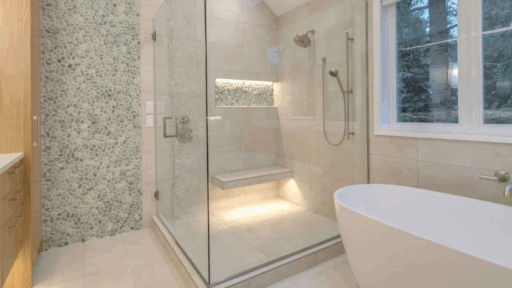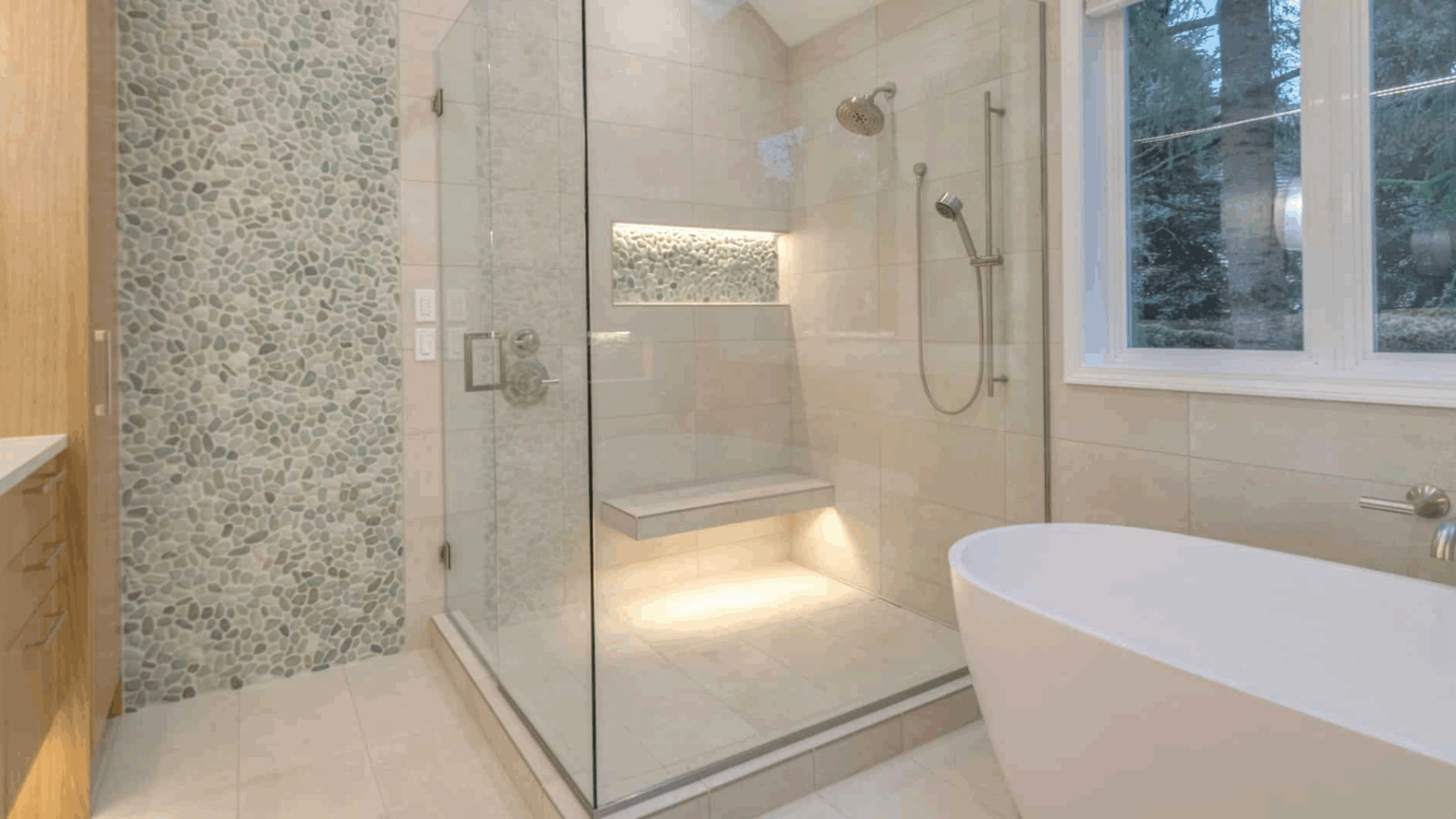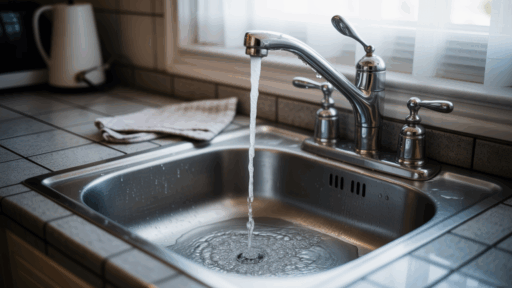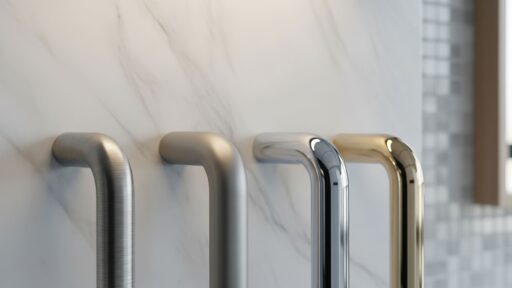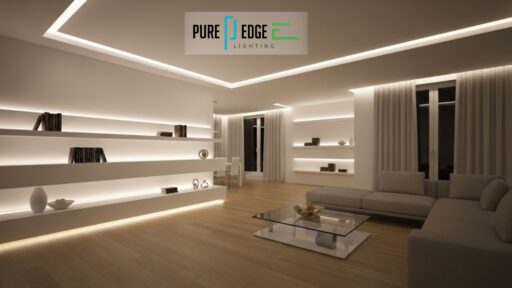Picture this: you’re squeezed into a shower so tiny that washing your hair feels like performing acrobatics, or you’re drowning in a cavernous space that makes you feel like a lost pea in a pod. Sound familiar?
Your shower size isn’t just about fitting into your bathroom; it’s about creating a daily ritual that either energizes or exhausts you.
The truth is, most people spend more time choosing their morning coffee than planning their shower space. Yet this watery sanctuary can make or break your entire bathroom experience.
If you’re working with a compact urban apartment or a spacious master suite, the correct shower dimensions can turn your mundane morning routine into something you look forward to. Size does matter here.
Understanding Shower Sizes: Key Considerations
The right shower size isn’t just about fitting your body; it’s about fitting your lifestyle. From cramped quarters to spacious sanctuaries, every dimension tells a story about how you want to start and end your day.
Shower Dimensions: Standard Sizes and Variations
Think of shower sizing like buying jeans; there’s no true “one size fits all,” but there are some crowd favorites.
- The compact 32×32-inch shower is the studio apartment of bathing spaces: efficient, functional, and perfect for tight quarters where every square inch counts.
- Step up to the popular 36×36-inch model, and you’ve entered the sweet spot; roomy enough for comfortable movement without hogging precious bathroom real estate.
- For those craving more elbow room, 42×36-inch showers offer that luxurious “I can actually turn around without bumping into walls” experience.
- And if you’re blessed with abundant space, showers 48 inches or larger become your personal spa retreat.
| However, these numbers aren’t just random measurements pulled out of thin air. Your shower size selection depends on a delicate dance between bathroom layout, available square footage and how you use your space. |
Ceiling Height Considerations
Here’s what most people forget: showers aren’t just about floor space; they’re three-dimensional experiences.
- Standard 8-foot ceilings are suitable for traditional enclosed showers, but they can feel cramped with specific design choices.
- Walk-in showers are ceiling-height game-changers. They create an open, airy feel that makes even modest bathrooms seem more spacious.
- Higher ceilings (9-10 feet) open up possibilities for rainfall showerheads, which need adequate clearance to function correctly.
- Lower ceilings might dictate wall-mounted fixtures instead. The height also influences ventilation needs; taller spaces require more powerful fans to prevent moisture buildup in those hard-to-reach corners.
Types of Shower Bases: Options for Every Bathroom
Your shower base is the unsung hero of your bathroom; the foundation that quietly handles gallons of water while you’re busy contemplating life under the spray.
1. Traditional Shower Pans
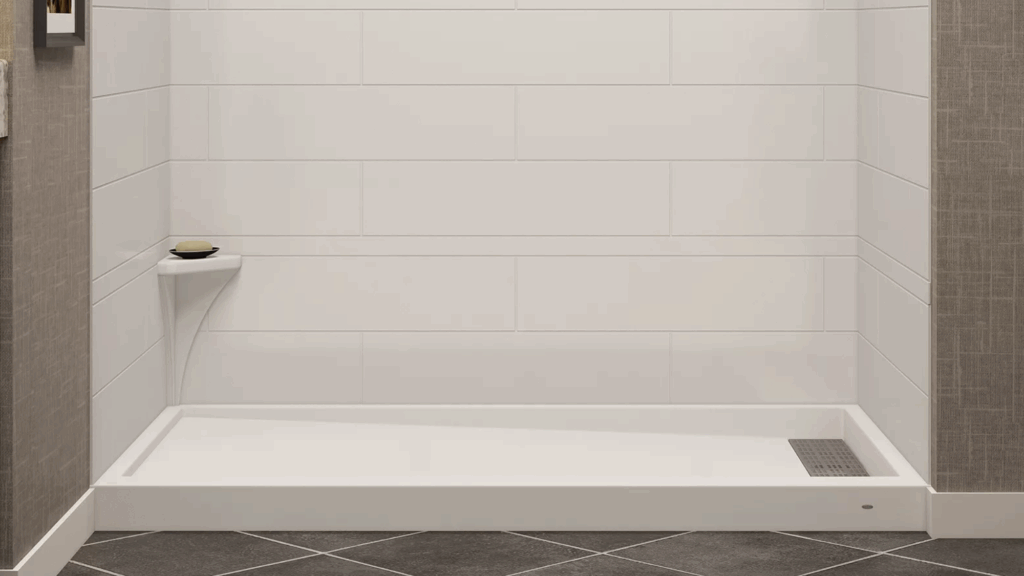
Traditional shower pans are the reliable workhorses of the shower world; straightforward, dependable, and refreshingly uncomplicated.
These factory-made bases are available in standard sizes (32×32, 36×36, 42×36) and materials, including acrylic, fiberglass, and cultured marble.
What makes them appealing is their plug-and-play nature: they arrive ready to install with pre-sloped drainage and standard plumbing connections.
Installation costs: $200-$600 for labor, plus $150-$800 for the pan itself
2. Custom Shower Bases

Custom shower bases are where function meets personal flair; tailor-made solutions for spaces that don’t fit the standard mold.
These bases can be crafted from various materials including tiled surfaces, natural stone, or specialized waterproof systems that accommodate any size or shape your bathroom demands.
The primary advantage lies in their adaptability: odd corners, sloped floors, or unique architectural features become opportunities rather than obstacles.
Installation costs: $800-$2,500 for labor, plus $300-$1,500 for materials
3. Pre-Fabricated Shower Bases
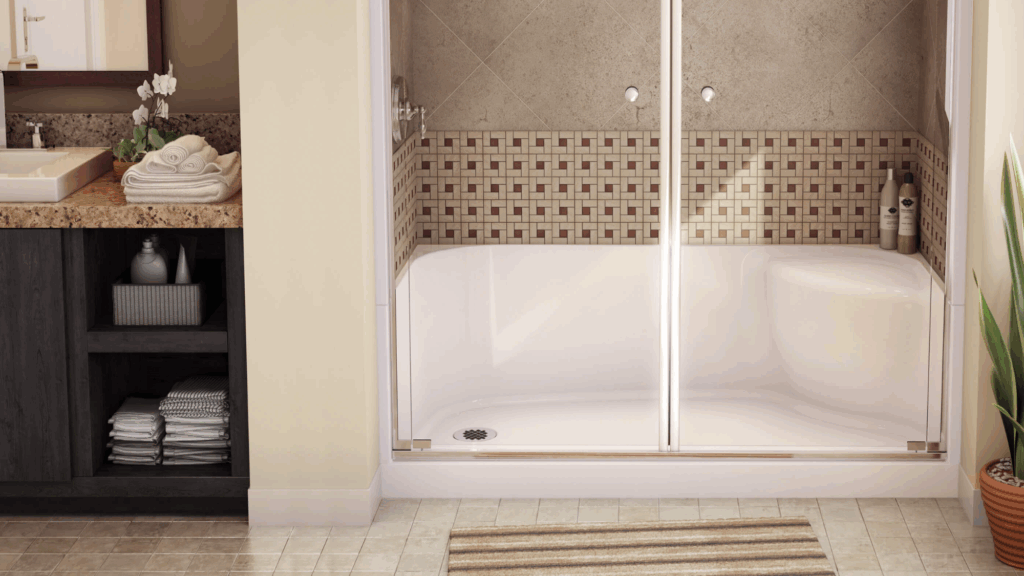
Pre-fabricated bases strike a middle ground between convenience and customization, being manufactured to precise specifications while offering more variety than traditional pans.
Available in materials ranging from solid surface composites to reinforced acrylic, these bases come in numerous sizes, shapes, and colors to match diverse design schemes.
Installation benefits include consistent quality control, reliable warranties, and faster project completion times (typically 3-6 hours).
Installation costs: $400-$1,200 for labor, plus $300-$1,800 for the base
4. Barrier-Free or Roll-In Shower Bases
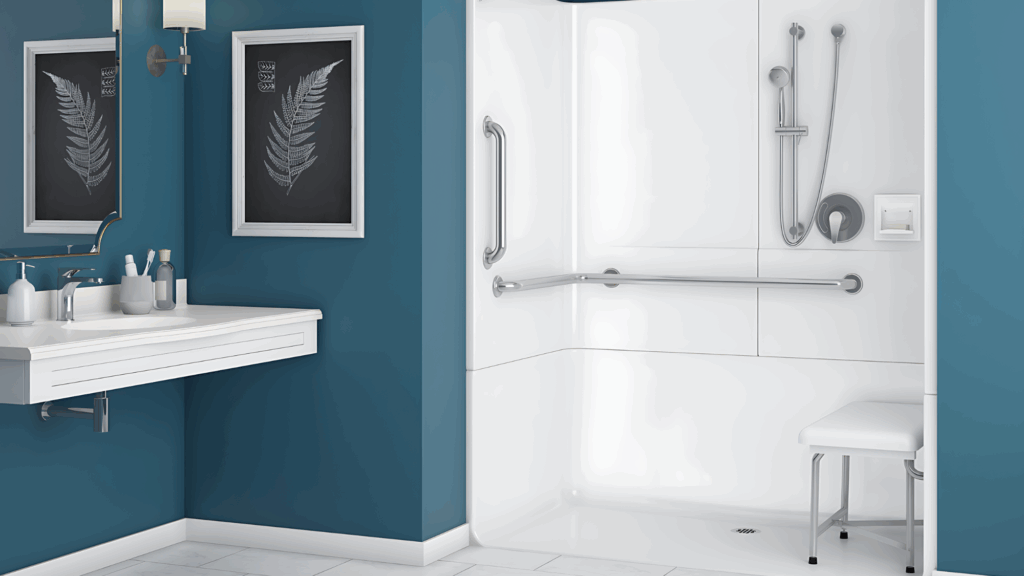
Barrier-free shower bases prioritize accessibility without compromising style; they are designed with minimal or zero threshold entry to accommodate wheelchairs, walkers, or anyone with mobility challenges.
These bases feature carefully engineered slopes that direct water toward drains while maintaining safe, level entry points.
The low-threshold or no-threshold design requires precise planning during installation, as proper drainage becomes more critical when traditional curbs aren’t present.
Installation costs: $1,000-$3,000 for labor, plus $400-$2,000 for specialized base and drainage systems
Shower Walls: Materials and Styles to Match Your Shower Base
Your shower walls are the backdrop to your daily performance; they need to look good, perform flawlessly, and withstand years of steamy encounters.
1. Acrylic Shower Walls
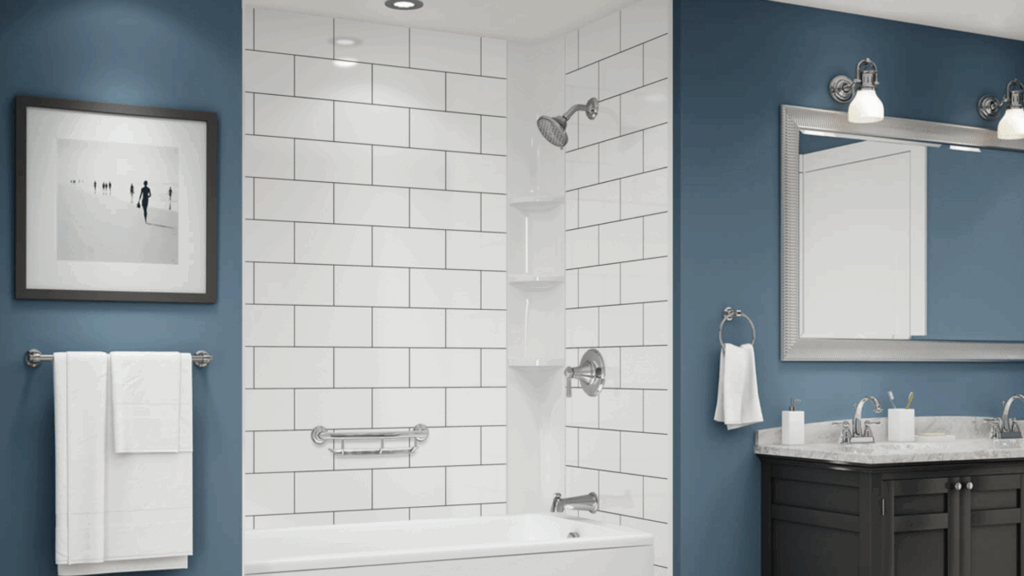
Smooth, non-porous surface that resists stains and soap scum, available in multiple colors and patterns for budget-conscious homeowners.
Key advantage: Requires minimal maintenance with simple soap-and-water cleaning
2. Fiberglass Shower Walls
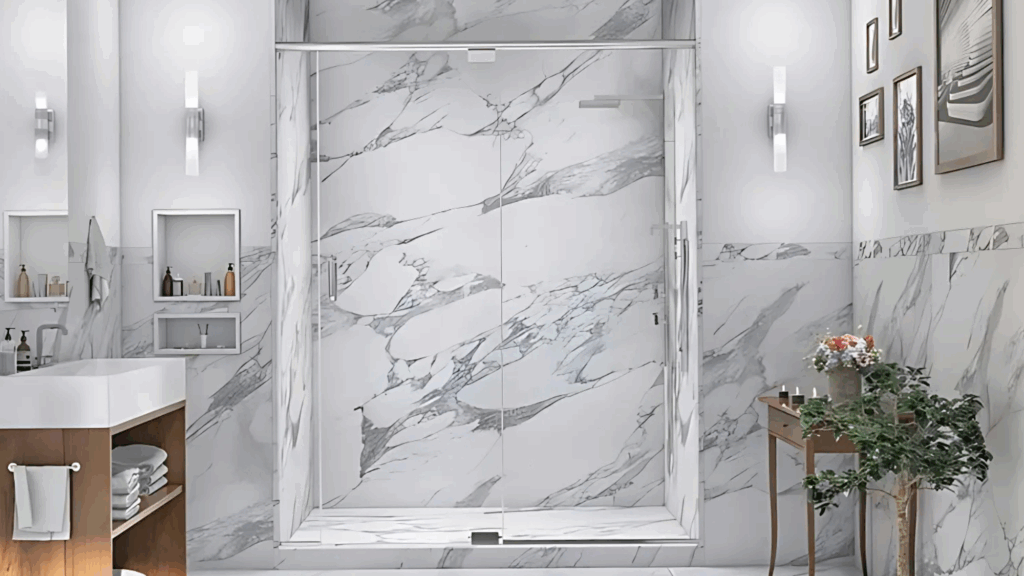
Durable, impact-resistant material that offers good value with moderate maintenance needs, although the gel coat can dull over time with use.
Key advantage: Easy to repair if damaged, making it practical for busy households
3. Tile Shower Walls
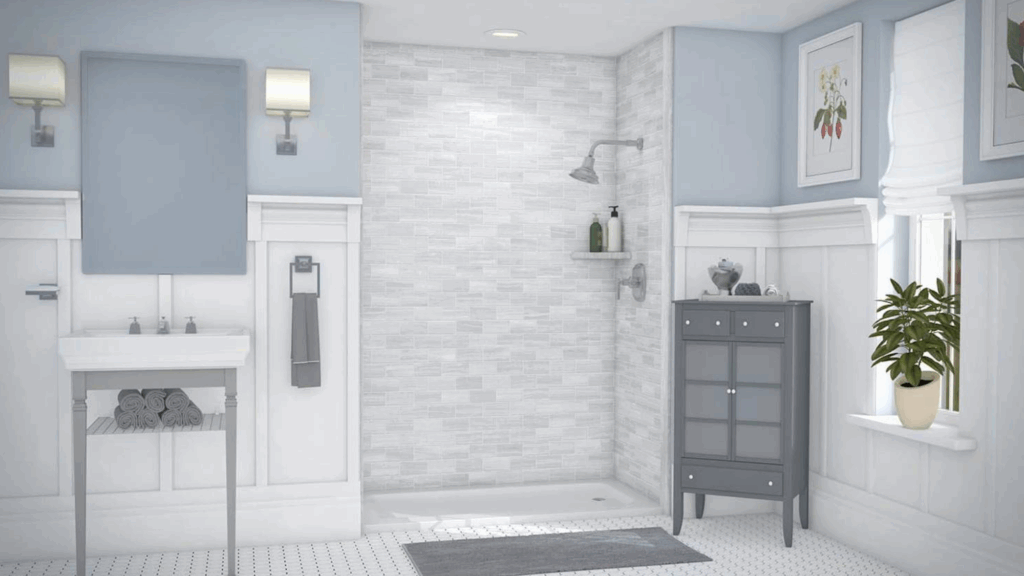
Ceramic, porcelain, and natural stone options provide design flexibility and long-term durability, requiring skilled installation but lasting decades.
Key advantage: Unlimited design possibilities with excellent water resistance when properly installed
4. Glass Shower Panels
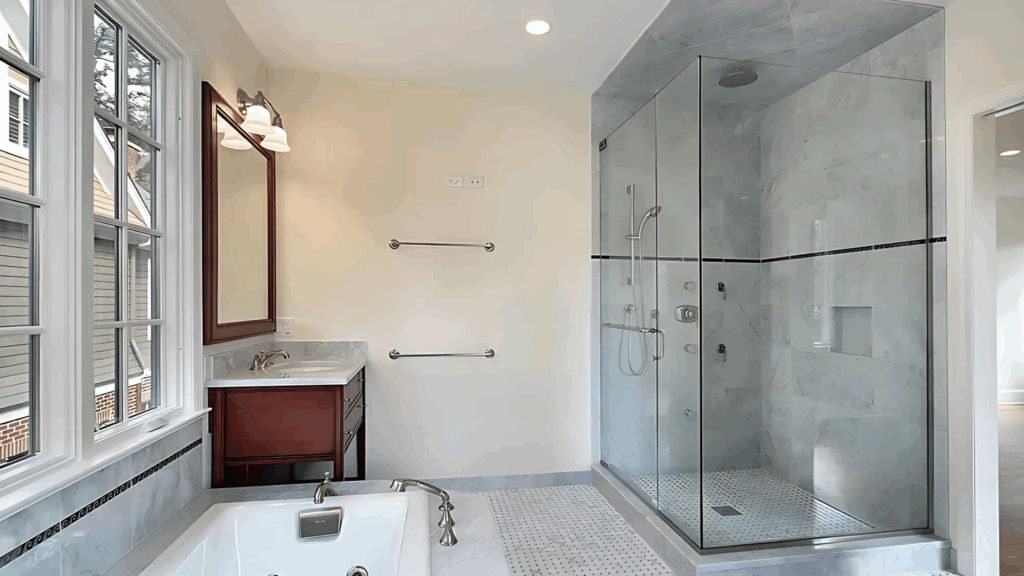
Tempered glass creates open, sophisticated look that makes bathrooms feel larger, available in frameless or framed configurations.
Key advantage: Creates illusion of spaciousness while providing premium, hotel-like aesthetics
5. Vinyl and PVC Shower Walls
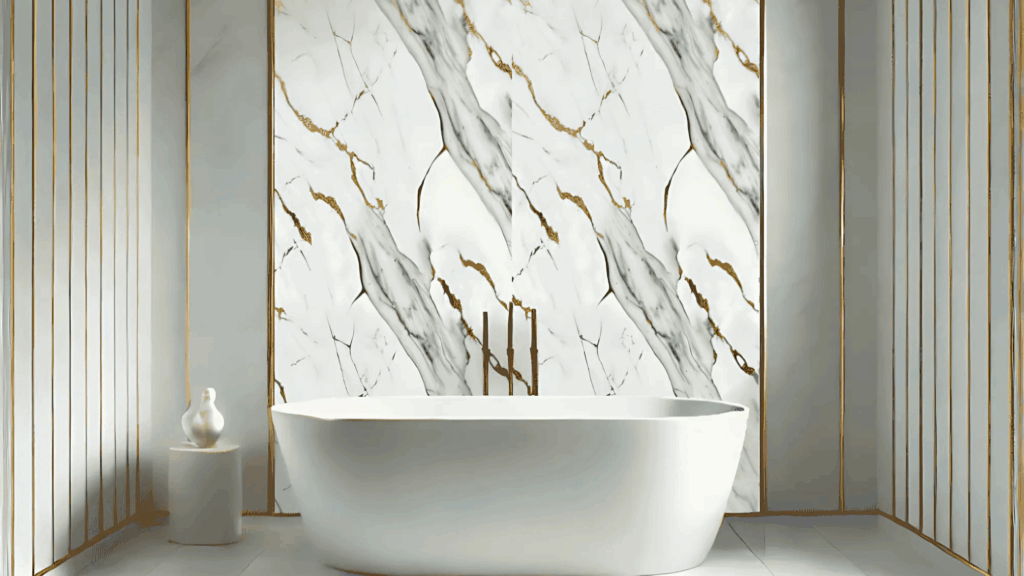
Budget-friendly, water-resistant panels that prevent mold buildup, offering straightforward installation suitable for DIY projects and quick renovations.
Key advantage: Lowest cost option with excellent moisture resistance and easy replacement
Shower Design Tips for Small Bathrooms
Small bathrooms don’t have to mean compromising on comfort: they just require more innovative design strategies that make every square inch count. With the right approach, your compact shower can feel surprisingly spacious and functional.
1. Corner Showers: Making the Most of Forgotten Spaces: Corner showers are the space-saving champions of small bathrooms, tucking neatly into areas that would otherwise go unused.
2. Compact Enclosures with Smart Storage: Compact shower enclosures work best when they incorporate built-in storage solutions that eliminate the need for bulky caddies or shelving units.
3. Frameless Glass Doors: The Illusion of Space: Frameless glass doors are optical magicians in small bathrooms, creating uninterrupted sight lines that make the entire space feel larger and more open.
4. Vertical Design Elements: Think upward when horizontal space is limited. Tall, narrow shower designs with ceiling-mounted rainfall showerheads create the impression of height and luxury.
Is a Larger Shower Always Better? Pros and Cons
When considering a larger shower, it’s essential to weigh the benefits and drawbacks against your bathroom size, needs, and lifestyle.
Here’s a quick look at the pros and cons of different scenarios to help you decide if a larger shower is the right fit for your space.
| Scenario | Pros | Cons |
|---|---|---|
| Larger Families or Households | More space for multiple users, comfortable for family use. | Takes up space in smaller bathrooms, has higher water usage, and higher costs. |
| Luxury or Spa-Like Experience | Enhanced comfort, spa-like experience, and better airflow. | Requires more space, is expensive, and is harder to maintain. |
| Larger Bathrooms | Visually pleasing, room for extra features, flexible design. | Can be underused, costly, and may overwhelm the space. |
| Accessibility Needs | Easy access, increased safety, and promotes independence. | It might be too large, have higher installation costs, and not always be practical. |
| Small Apartments or Compact Spaces | Makes the bathroom feel spacious and comfortable in a limited space. | Takes up valuable space, reducing room for other features. |
Final Thoughts: Finding Your Perfect Shower
Your shower should work as hard as you do: providing the perfect balance of form, function, and daily enjoyment.
The right combination isn’t about following trends or copying magazine spreads; it’s about understanding your unique needs and making informed choices that enhance your daily routine.
Ready to upgrade your daily routine? Start by measuring your space and identifying your must-haves versus nice-to-haves. Visit local showrooms to see materials in person; photos can’t convey the authentic feel of different surfaces or the quality of craftsmanship.
Your perfect shower is waiting; it just needs the right planning and professional execution to become a reality. Don’t settle for “good enough” when you use this space every single day.

